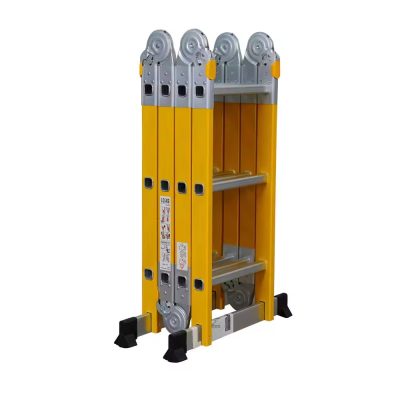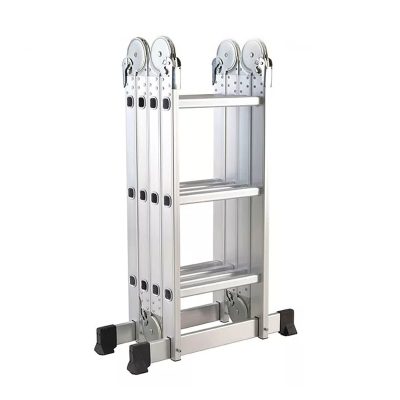Within the aerospace industry, where precision and safety are paramount, aircraft maintenance stands as a critical pillar ensuring the reliability and airworthiness of aircraft. From routine inspections to complex repairs, aviation maintenance demands meticulous attention to detail and adherence to stringent safety protocols. At the heart of these operations lie aluminum ladders, versatile tools that provide safe and reliable access to aircraft exteriors and interiors. In this exploration, we delve into the indispensable role of aluminum ladders in aviation maintenance, highlighting their contributions to enhancing safety, efficiency, and operational excellence in the aerospace sector.
Ascending to New Heights:
Aircraft, with their towering fuselages and expansive wings, present unique challenges in terms of maintenance access. Aluminum ladders serve as the primary means of accessing elevated areas of aircraft exteriors and interiors, enabling technicians to perform a wide range of maintenance tasks, from visual inspections to component replacements and repairs. Whether it’s reaching engine cowlings, accessing cargo holds, or inspecting avionics systems, these ladders provide technicians with stable and secure platforms to work from, ensuring that maintenance operations are conducted safely and effectively.
Safety at Altitude:
Safety is paramount in aviation maintenance, where technicians operate at considerable heights and face potential hazards such as adverse weather conditions and confined spaces within aircraft structures. Aluminum ladders prioritize safety through robust design features such as non-slip rungs, sturdy handrails, and secure locking mechanisms. Additionally, adherence to stringent safety regulations and industry standards ensures that ladders are inspected regularly and maintained in optimal condition, mitigating risks and safeguarding the well-being of technicians working at altitude.
Adaptability to Aircraft Configurations:
Aircraft come in a variety of shapes and sizes, each with its unique configuration and maintenance requirements. Aluminum ladders excel in adapting to these diverse environments, offering a range of configurations—from step and extension ladders to platform and rolling ladders—that cater to different aircraft types and maintenance tasks. Telescoping and folding designs enable ladders to navigate tight spaces and fit through narrow openings, while lightweight construction facilitates easy transportation and maneuverability, ensuring technicians can access even the most remote areas of aircraft with ease.
Durability for Mission-Critical Operations:
Aircraft operate in demanding conditions, subjected to constant exposure to high-altitude flight, temperature fluctuations, and environmental factors. Aluminum ladders are prized for their durability and resilience, thanks to their construction from high-grade aluminum alloys known for their strength and corrosion resistance. These ladders withstand the rigors of regular use in aviation maintenance, retaining their structural integrity and performance over extended periods, thereby contributing to the long-term reliability and safety of aircraft operations.
Enhancing Operational Efficiency:
By providing safe and reliable access to elevated work areas, aluminum ladders contribute to enhancing operational efficiency and minimizing downtime in aviation maintenance operations. Technicians can perform tasks more effectively and expediently when equipped with the right tools, ensuring that aircraft remain operational and airworthy without interruption. Moreover, the ergonomic design and user-friendly features of aluminum ladders optimize technician comfort and productivity, further enhancing overall operational efficiency and ensuring that maintenance operations are conducted with precision and excellence.
Conclusion:
In the complex and safety-critical realm of aviation maintenance, aluminum ladders emerge as indispensable tools for ensuring the reliability and airworthiness of aircraft. By enabling safe and efficient access to elevated work areas within aircraft structures, these versatile ladders play a fundamental role in facilitating routine maintenance and inspection operations. As the aerospace industry continues to evolve and innovate, aluminum ladders will remain essential assets, empowering technicians to scale new heights safely and uphold the integrity of aircraft operations for decades to come.







